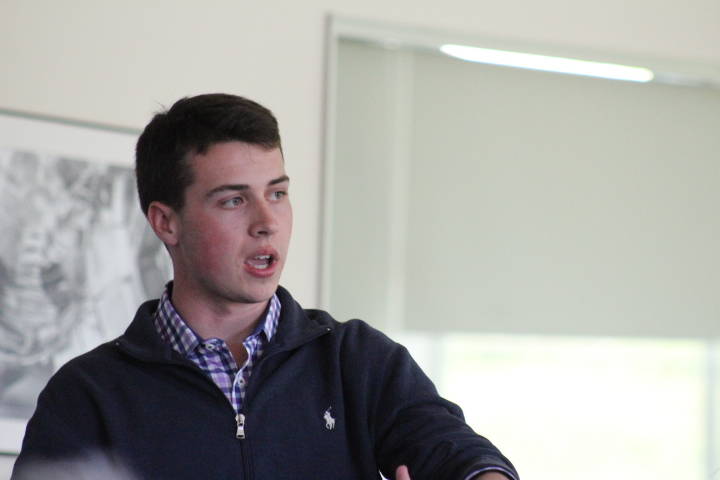International Space Settlement Design Competition challenge to high school students – design an orbiting space station that can house 11,000 people and catch asteroids. A team of more than 30 Friday Harbor High School students readily accepted that challenge. The end result put the group in the top four to compete in the competition’s World’s Finals at the Kennedy Space Center in July.
“The judges have a whole universe they constructed, and we have to look at their research and expand on it,” Arlo Harold, a team member, said. Last year the team won second place in the finals. This year, with another project under their belt, they are hoping for first. The competition is sponsored by the National Space Society, a nonprofit dedicated to the creation of a spacefaring civilization, according to the website.
The Friday Harbor Aerospace Design Team presented its project to the public on June 10. Prior to the public presentation, the teens met with and presented their results to Washington Gov. Jay Inslee during his visit to Friday Harbor June 6.
Friday Harbor High School teacher Daniel Garner explained to attendees that the students needed to understand Requests for Proposals and develop technical writing skills since those aspects are key to the project and the fields of engineering and design.
Senior Lucy Urbach began the presentation by explaining how the design team organized itself into groups: systems engineering; structural engineering; operations and infrastructure; human factors; automation engineering; business and marketing and imaging.
The teams at least two months discussing even the minor details and debating how best to solve engineering issues, she said.
Harold and Julian Brown spoke on a few of the engineering aspects of the project.
“The packet had thousands of questions and we had to work through all of them,” Harold said, adding that the request for proposal packet from the settlement design competition detailing the project’s requirements was 40 pages long.
The structural engineer group consisted of Harold, Brown, Nick Herko, Evan Foley, Jonah Strasbourger, and Bailee Lambright. The engineers were tasked with designing electronic arms for the capture of the asteroid; safety features like thick radiation protection for the residents; creating an open vacuum storage area for easy shipping and receiving; and efficient magnetic connections between the rotating and nonrotating parts of the station, among other issues.
Senior graduate Brandon Payne explained some of the operational features.
“[Operations and infastructure] was a heavy responsibility,” Payne said, noting that the team was charged with ensuring there was enough food, water, and air for the 11,000 people. Besides being in charge of organizing life-sustaining robots Transportation on and around the station and loading and unloading various cargo.
“It was a fascinating challenge,” Payne said. Also in that committee were Emmett Carrier, Henry Duke, Aidan Shannon, Ryker Mattox, Emma Mughal, and Satchel Pieples.
The design team needed to consider the human aspects of the station. The layout for housing needed to be comfortable, so the students created entertainment options; they also took into consideration the inhabitants’ safety, like ensuring there were enough spacesuits for everyone. They also designed the settlement to have a homey, comfortable. To give the layout an open feel, for example, areas with long lines of sight were created.
That team included Nick Copley, Nate Clarke, Weston Swirtz Hannah VanEvery, and Sander VanHamersfeld.
Automation and engineer team included Darcy Ayers, Liz Cruz, Hank Ericson, Gavin Flaum Joely Loucks and Luke Waite. This group was in charge of engineering a computer network system for the station and creating robots for personal use, as well as to help with mining the asteroid.
The business and marketing team included Keegan Bailey, Jaden Jones, Payton Malloy, Ally Pauls and Octavio Olvera. Jones addressed the audience and explained that the team reviewed and kept track of the cost of everything. The total cost of the station was 13.8 trillion dollars, he noted. This committee also organized refining and processing centers, labs and security systems for different levels of clearance.
Garner told the audience the team will have a few weeks break before preparing for the finals. In Cape Canaveral, he said, the team will be given a design challenge even more complicated than the one for which they recently were awarded, and the students will have only 42 hours to complete the project. The competition will be tough, but the Friday Harbor team has evolved to work tightly together and consult with one another.
“You can have a brilliant mind, but if you can’t communicate it, it doesn’t matter,” Garner said.



